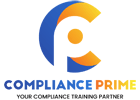A well-crafted rental lease agreement is essential for a harmonious landlord-tenant relationship. It sets clear expectations, protects both parties, and ensures legal compliance.
Whether you’re a first-time landlord or looking to update your existing lease, this guide will help you create a comprehensive and legally sound rental lease agreement.



Key Elements of a Rental Lease Agreement
- Basic Information
- Parties Involved: Clearly identify the landlord and tenant(s) with full legal names.
- Property Address: Specify the complete address of the rental property, including unit number if applicable.
- Lease Term
- Duration: Define the lease term, whether it’s a fixed-term lease (e.g., one year) or a month-to-month agreement.
- Start and End Dates: Include the exact start and end dates of the lease term.
- Rent Details
- Amount: State the monthly rent amount.
- Due Date: Specify when the rent is due each month.
- Payment Method: Outline acceptable payment methods (e.g., check, electronic transfer).
- Late Fees: Detail any late fees and the grace period, if any.
- Security Deposit
- Amount: Indicate the amount of the security deposit.
- Use and Return: Explain how the deposit will be used and the conditions for its return, including any deductions for damages.
- Utilities and Services
- Included Utilities: List any utilities or services included in the rent (e.g., water, gas).
- Tenant’s Responsibility: Clarify which utilities the tenant is responsible for setting up and paying.
- Maintenance and Repairs
- Landlord’s Responsibilities: Specify the landlord’s responsibilities for maintenance and repairs.
- Tenant’s Responsibilities: Outline the tenant’s duties to keep the property clean and report any needed repairs.
- Occupancy Limits
- Authorized Occupants: List the names of all authorized occupants.
- Guest Policy: Define the policy for guests and the maximum duration of their stay.
- Property Use and Restrictions
- Permitted Use: State that the property is to be used solely as a residential dwelling.
- Prohibited Activities: List any prohibited activities or behaviors (e.g., illegal activities, smoking).
- Pets
- Pet Policy: Clearly state whether pets are allowed, and if so, include any restrictions, additional deposits, or pet rent.
- Renewal and Termination
- Renewal Terms: Explain the process for renewing or extending the lease.
- Notice Periods: Define the notice periods required for termination by either party.
- Entry by Landlord
- Notice for Entry: Outline the conditions under which the landlord may enter the property and the required notice period (e.g., 24 hours).
- Dispute Resolution
- Mediation/Arbitration: Include any provisions for resolving disputes through mediation or arbitration.
- Legal Compliance
- Local Laws: Ensure the lease complies with local, state, and federal laws regarding rental properties.
- Disclosures: Include any required legal disclosures (e.g., lead paint disclosure for older properties).
Writing Tips
- Clarity and Precision: Use clear and precise language to avoid ambiguity.
- Consistency: Ensure consistency in terms throughout the document.
- Professional Tone: Maintain a professional tone while being comprehensive.
Sample Clause Examples
- Rent Payment: “The Tenant agrees to pay the Landlord a monthly rent of $1,200, due on the first day of each month. Payment shall be made via electronic transfer to the account specified by the Landlord.”
- Security Deposit: “The Tenant shall pay a security deposit of $1,200 prior to occupying the premises. The deposit will be returned within 30 days after the lease ends, less any deductions for damages beyond normal wear and tear.”
- Maintenance Responsibilities: “The Landlord is responsible for maintaining the structural integrity of the property and ensuring all systems (e.g., plumbing, heating) are in working order. The Tenant shall promptly report any maintenance issues to the Landlord and keep the property clean and sanitary.”
Final Steps
- Review and Revise: Carefully review the agreement to ensure it covers all necessary aspects and is free of errors.
- Legal Consultation: Consider having a legal professional review the lease to ensure compliance with all applicable laws.
- Signing: Both the landlord and tenant(s) should sign and date the lease. Provide copies to all parties involved.
Conclusion
Creating a detailed and clear rental lease agreement is essential for avoiding misunderstandings and ensuring a smooth landlord-tenant relationship. By including all necessary elements and adhering to legal requirements, you can protect your interests and provide a clear framework for tenancy. Whether you’re new to leasing or updating an existing document, a well-written lease is a cornerstone of successful property management.




